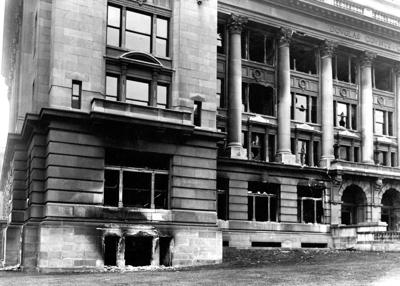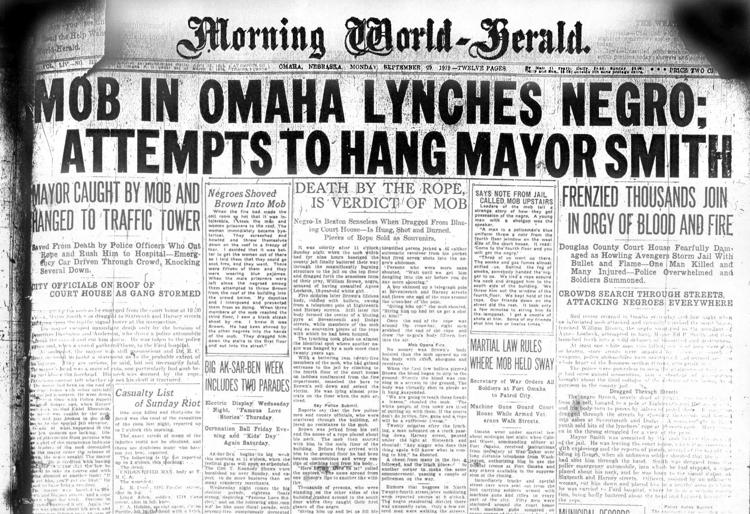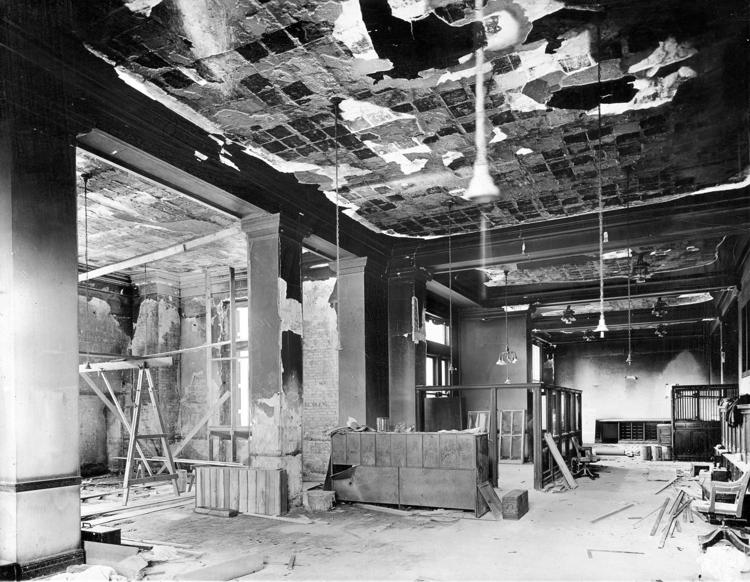Bathed in white privilege before outbreak of the First World War, many European Americans soon found after the war that times had changed.
Enlisted men were returning home. Government spending on arms was winding down and competition for work became fierce. For the first time, whites had to compete with Blacks for jobs.
Whites turned their anger and frustration on black neighborhoods spreading terror and fear nationwide. 1919 recorded the bloodiest summer among the races.
In Omaha on September 25, 1919, 19-year-old Agnes Loebeck accused a packing house worker Will Brown of rape. Arrested, he was held and questioned by police in Douglas County jail the next day. Loebeck identified Brown as her rapist; however, during questioning, Brown stated that Loebeck did not make positive identification, which Loebeck later refuted.

“Notorious crime and political mobster, Tom Dennison’s opposition to then-Omaha Mayor Ed Smith, deemed a reformer was widely known. Loeback’s boyfriend was a man named Milton Hoffmann, who worked for Dennison. The Omaha Bee, which was considered a newspaper that backed Dennison, sensationalized the crime report with its brand of frenzy-building yellow journalism.”
The claim is that Dennison was behind the riot and lynching as an effort to get Smith, or at least make the reformer look bad enough that Dennison’s man could win the next mayoral election.
In that vein, a mob soon formed demanding Brown be handed to them. The police refused, the mob then sent fire to the jail. While officers battled the flames; the mob stormed in and dragged the 40-year-old Brown below. Omaha mayor, Ed Smith tried to stop the mob which had swelled to thousands.
The mob turned their fury on the mayor when a boy with the mob claimed he shot at him. He was captured and a noose placed around his neck and hanged. “If you must hang somebody, then let it be me,” the mayor said.
He narrowly escaped death when an officer rammed a vehicle into the traffic signal pole whereupon he was rushed to the Ford Hospital. He would battle for his life for days before recovering. “They shall not get him. Mob rule will not prevail in Omaha,” the mayor kept muttering during his delirium.

By evening, “throngs swarmed about the courthouse on all sides. The crowd wrestled revolvers, badges, and caps from policemen. They chased and beat every African American who ventured into the vicinity. White civilians who attempted to rescue black civilians were subjected to physical abuse. The police had lost control of the crowd. Police records showed that more than 1,000 revolvers and shotguns were stolen that night.”
Unlike Smith, Brown fared worse. He was shot hundreds of times and his body hanged on a light pole. His body was then dragged through the streets of Downtown Omaha. Finally, it was burned before some 15,000 people. Why Smith or indeed any of the senior police officers did not call for military support or use live ammunition to disable the advancement of the mob while under attack showed an indoctrination bordering on the line of not giving up a white person for a Black no matter how foul. For what is certain is that, had it been a Black mob advancing on the court house and jail, helicopters will have been flown in with either live ammunition to shoot into the crowd or they would have been bombed.

“A photograph of Brown’s smoldering corpse surrounded by smug-looking white people became a horrifyingly iconic image of what came to be known as the “Red Summer” of 1919, when the domestic terrorism of lynchings and other racial violence swept across the nation.”
By morning, the city was placed under martial law. Troops were placed on the streets to prevent further outbreak of violence. The riots were confined to the court house and parts of Downtown.
Its impact, however, traumatized the Black community. Reinforcing a growing helplessness and that death at the hand of a white person could be met at anytime.

LOUIS R. BOSTWICK
In Omaha, Brown’s grave remained unmarked in the pauper cemetery Potter Field for 90 years, until a California man bought a stone for him in 2009.
It took one hundred years after the Douglas County Courthouse race riot and lynching of Will Brown, in September 2019 for playwrights, pastors artists, activists, historians, and politicians to commemorate the sordid affair, situating it in America’s aggressive and shameful treatment of its Black citizens.
Brown, some historians reckon was wrongly accused of assaulting the white woman.

PAT MCANDREWS/THE WORLD-HERALD
While the story of Brown’s lynching had been fading from Omaha’s memory, it gained new currency as people nationally and in Omaha recalled the Red Summer, the product of white supremacist activity.
A Community Remembrance Ceremony and prayers was offered capped with music. Soil from the courthouse lawn was fetched and now rests in a jar along other soil samples from other lynching sites at the national memorial to lynching victims in Montgomery, Alabama.
The lynching stories hard to take in as they are because of the horrific happenings, nonetheless offer us the historical context of the violence and ramifications of racism in America.











